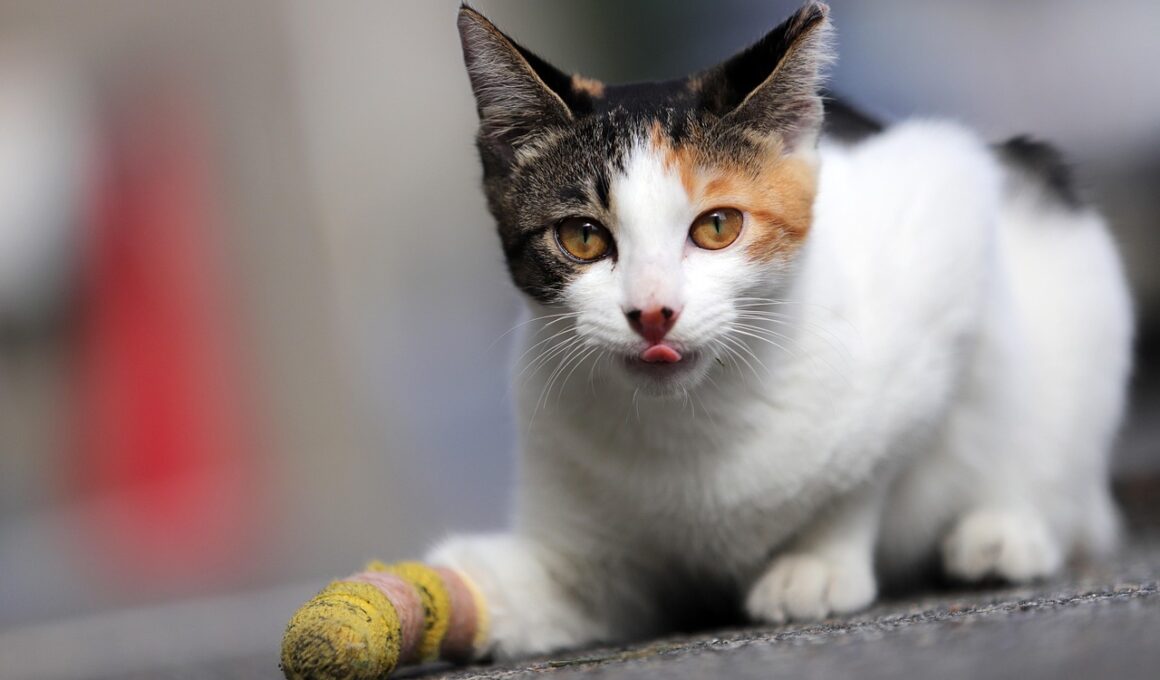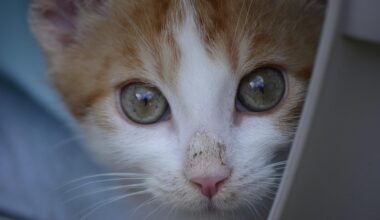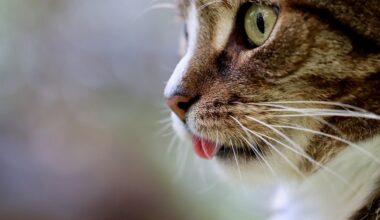Common Cat Injuries Covered by Insurance
Cat owners often face unexpected situations that can lead to injuries for their feline companions. Having cat insurance helps cover the costs associated with veterinary treatments for those injuries. By investing in cat injury coverage, pet owners can ensure that their cats receive prompt medical attention when needed. Common injuries can include broken bones, cuts, and sprains. Insurance plans typically cover medical expenses related to these injuries. Identifying the type of coverage offered is crucial when selecting a policy. Many insurance providers have varying levels of coverage for different types of injuries. Read the fine print to understand the specific conditions under which your cat’s injuries are covered. Some plans may have exclusions or limitations that one should be aware of. Researching different insurance policies often reveals options tailored to individual needs and budgets. Consider reaching out to your veterinarian for recommendations on the best insurance options. With adequate coverage, you can focus on providing the best possible care for your beloved pet without financial concerns. Cat injuries can happen at any time, so preparation is key.
One of the most common injuries seen in cats is broken bones. This can occur due to various reasons, such as falls or accidents, and can be incredibly painful for a cat. When cats are active and curious, they tend to put themselves in situations that can lead to fractures, particularly in the legs or tail. Insurance typically covers the diagnosis and treatment of breaks, which may include surgical intervention. In severe cases, your cat might need cast immobilization or even surgical plates to stabilize the bone. Recovering from a broken bone can take weeks, requiring follow-up veterinary visits, which can accumulate costs quickly. Many pet insurance policies can ease this financial burden by covering the expenses involved. It’s essential to evaluate the coverage limits on bone injuries when looking for insurance. Some providers may have specific terms regarding how much they will pay for such injuries. Always check if the insurance includes rehabilitation therapies because they might be necessary during recovery. Alternatives like physical therapy can be beneficial, so having insurance can provide peace of mind during such unfortunate incidents.
Common Cat Injuries: Cuts and Lacerations
Cuts and lacerations are frequent injuries among cats, often resulting from fights with other animals or sharp objects. Minor cuts might heal quickly without intervention, but deeper lacerations are cause for concern and typically require veterinary attention. It’s crucial to understand that pet insurance can cover the cost of treating these injuries. Insurance helps with expenses for cleaning, suturing, and follow-up care after a laceration. Often, veterinarians will assess the necessity of stitches based on the injury’s severity. Keeping your cat’s immunizations current is equally important because any open wound can pose infection risks. When choosing insurance, look for plans that cover minor injuries as well as more extensive surgical procedures. You may find that all types of skin injuries are included in policies that focus on comprehensive pet health. Ask your provider about the terms and conditions of coverage for these injuries. Prompt treatment can make a significant difference in recovery time and your cat’s overall comfort. Having insurance allows you to act swiftly without worrying about the financial aspects.
Sprains and strains are other common injuries that many cat owners encounter. These often occur due to abrupt jumps or twisting movements that result in muscle or ligament injuries. Cats, being agile animals, frequently engage in activities that can lead to these types of accidents. It’s vital for cat owners to monitor their pets closely, especially after a strange fall or limp. When considering cat insurance, inquire about coverage for sprains or strains. Policies often encompass the costs associated with diagnostic tests such as X-rays to determine the injury’s extent. If your cat requires therapy or pain relief, insurance plans can also offset those expenses. Ensure you keep thorough records of any potential injuries to expedite claims with your insurance provider. Educating yourself about the expected recovery timeline can help in observing your cat’s progress. Always consult a veterinarian for a professional assessment in case of suspected sprains. Taking preventive measures like maintaining a safe environment can reduce the likelihood of such injuries. However, accidents can happen, and having cat insurance will ease the recovery period financially.
The Importance of Timely Vet Visits
Timely vet visits are crucial when your cat suffers an injury to ensure the best outcome. Prompt assessment and treatment significantly enhance recovery chances. Pet insurance can play a pivotal role in allowing you to seek timely veterinary assistance without financial hesitation. Many owners might forgo immediate care due to cost concerns, leading to complications. Insurance coverage for injuries can alleviate anxieties associated with expensive vet bills. Early intervention often means less invasive treatment, which is preferable for both pets and owners. Additionally, if the injury is more complex, the costs can increase substantially, underscoring the importance of having insurance. Pet owners should choose a plan that offers coverage for various emergencies. Examine the terms regarding waiting periods for injuries, as these can vary between providers. It’s essential to know your coverage limits and what types of injuries are included before issues arise. Understanding your policy can help streamline the process when the unexpected happens. Educating yourself about available coverage will enable you to respond effectively during such emergencies.
Understanding the emotional and physical repercussions of cat injuries is vital for pet owners. Not only can injuries be painful for cats, but the associated stress can also affect their behavior and overall well-being. Many cats may become more withdrawn or agitated, especially after an accident. Being prepared with pet insurance allows you to address these emotional needs without the burden of extraordinary financial strain. A good insurance plan can take care of high vet bills associated with treating more serious injuries. Furthermore, some policies might even cover behavioral therapy if stress-induced issues develop following an injury. When choosing insurance, check for any clauses that might relate to behavioral health post-injury. Researching different insurance products can uncover plans that sufficiently cover both physical and psychological needs of your cat. Never hesitate to reach out to insurance agents for clarity about specific provisions. The well-being of your beloved pet is paramount, and having comprehensive coverage can ease worries when accidents occur. Evaluate various policies and see what options can best sustain your cat’s health and happiness.
Lifetime Benefits of Cat Injury Insurance
Cat injury insurance can provide lifetime benefits that extend beyond immediate injury treatment. With the unpredictable nature of accidents, having a robust plan in place may save you thousands in veterinary care over the years. Injuries can lead to chronic issues requiring ongoing care or even surgeries later in life. With the right insurance, you can ensure continuity of care for your pet. It’s always recommended to enroll your cat in pet insurance before any significant health events. Waiting too long can lead to pre-existing condition exclusions by most insurance providers. Evaluating different plans with a focus on long-term impact can significantly affect your pet’s health and finances over time. Some insurance companies even offer wellness packages in addition to injury coverage. Such packages often include preventative care that helps avoid injuries altogether. Furthermore, engaging with your provider can help refine your insurance needs as your cat ages. Taking these steps today can lead to a healthier, happier cat tomorrow. With sensible investments in insurance, you provide the best protection for your feline friend against the uncertainties that lie ahead.


